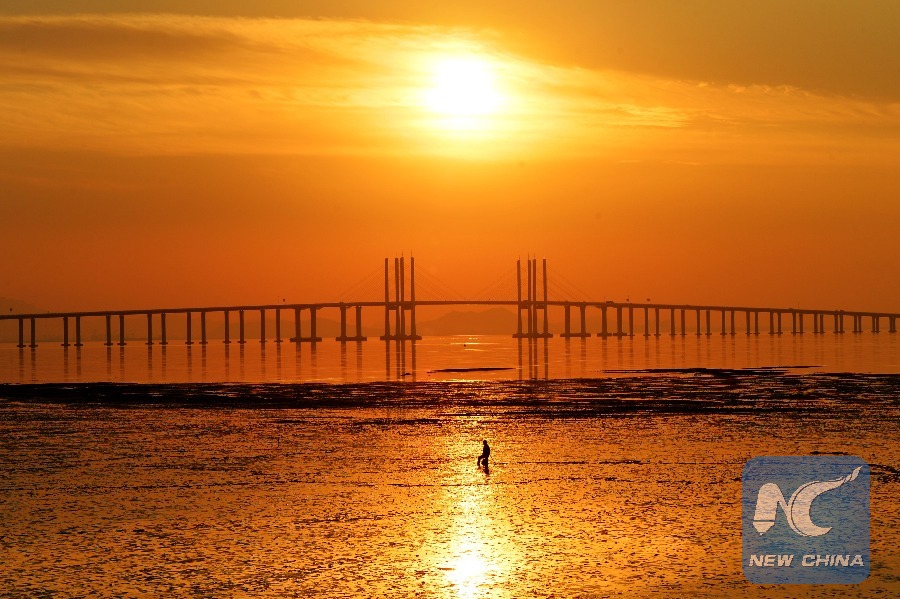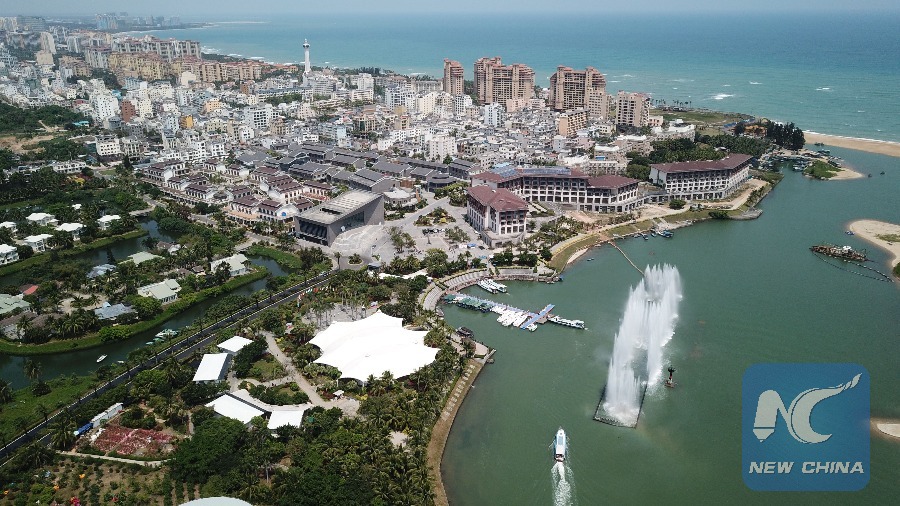
by Xinhua writers Shi Xiaomeng, Peng Tianxiao
BOAO, China, April 9 (Xinhua) -- "When big rivers have water, the small ones are filled; and when small rivers have water, the big ones are filled." This is a Chinese saying quoted by Chinese President Xi Jinping three years ago at the Boao Forum for Asia (BFA).
The annual gathering in Boao, south China's Hainan Province, is dedicated to regional integration and common prosperity in Asia, the world's largest and most populous continent, whose vein-like rivers cradled different civilizations and connected them geographically.
The destinies of the Asian countries have never been so closely intertwined as they are in today's globalized world. To boost Asia's regional integration, Xi called for building a community with a shared future for Asia in his keynote speech at the BFA annual conference in 2015.
Less than one month before this year's edition of the Boao forum, a grander plan to build a community with a shared future for mankind was inscribed into China's Constitution, showing Beijing's determination to seek common prosperity with its Asian partners and beyond.
Over the years, the Boao forum has turned out to be one of the key platforms where Chinese leaders put forth development-oriented proposals and drum up support for new initiatives.
As this year marks the 40th anniversary of China's reform and opening-up, Xi is expected to unveil more measures at the forum that aim to bolster greater regional progress and the building of a better Asia and a more prosperous world.

Aerial photo taken on March 23, 2018 shows scenery of Boao Town and the founding site of Boao Forum for Asia (BFA) in south China's Hainan Province. (Xinhua/Jin Liangkuai)
At a time when economic globalization and regional integration are met with a rising tide of protectionism and economic nationalism, notably in the developed world, Xi's announcements would carry special significance.
Even though it is faced with global headwinds, regional cooperation in Asia has reached a new, unprecedented level and is enjoying fresh vigor.
The Association of Southeast Asian Nations marked its 50th anniversary last year and is opening a new chapter. The talks on the Regional Comprehensive Economic Partnership are moving toward completion with high hopes of creating the world's largest free trade bloc.
In terms of sub-regional cooperation, the Lancang-Mekong Cooperation is gaining steam and the Bangladesh, China, India and Myanmar Economic Corridor has been steadily advancing.
Apart from fruitful results in economic development, the Asian countries have also worked together in areas such as disaster relief, counter-terrorism and joint law-enforcement operations against drug trafficking and telecommunications fraud in recent years through various cooperation mechanisms.
Despite these achievements, Asia's development still faces challenges on multiple fronts, including, among others, the spillover of monetary policies in the developed countries like the potential interest rate hikes in the United States, as well as infrastructure deficits in the region.
At present, Asia's infrastructure construction has largely been impeded by a lack of funds, human resources and technological innovation.

Aerial photo taken on March 25, 2018 shows part of the 35-kilometer seaside sightseeing highway in Wanning, south China's Hainan Province. (Xinhua/Guo Cheng)
According to a report released by the Asian Development Bank (ADB), Asia will need 1.7 billion U.S. dollars' worth of investment per year in infrastructure until 2030 to maintain its growth momentum, tackle poverty and respond to climate change.
Standing ready to share the dividends of its economic growth, China put forward the Belt and Road Initiative in 2013 and led the establishment of the Asian Infrastructure Investment Bank to address the pressing infrastructure needs across Asia.
So far, more than 40 Asian countries have joined the Belt and Road Initiative, and many have dovetailed their national development strategies with the initiative, aiming to seek common development.
Asia can now be called the world's major economic locomotive. It contributes 60 percent of the global growth, according to ADB.
President Xi noted in his 2015 Boao speech that "Asia is one of the most dynamic regions with the most potential and its global strategic importance has been rising."
Asia's rapid development and economic success over the recent decades demonstrate that openness and cooperation, instead of isolation and protectionism, pave the path to a brighter and more inclusive future in an age of globalization. That explains why Xi's proposal to build a community with a shared future has been growing increasingly popular around the world and in the region in particular.
An ocean is wide and deep because many rivers flow into it. When all Asian nations join forces and move in the same direction just like different rivers carry their water to a single destination, they will surely enjoy a more prosperous shared future.

